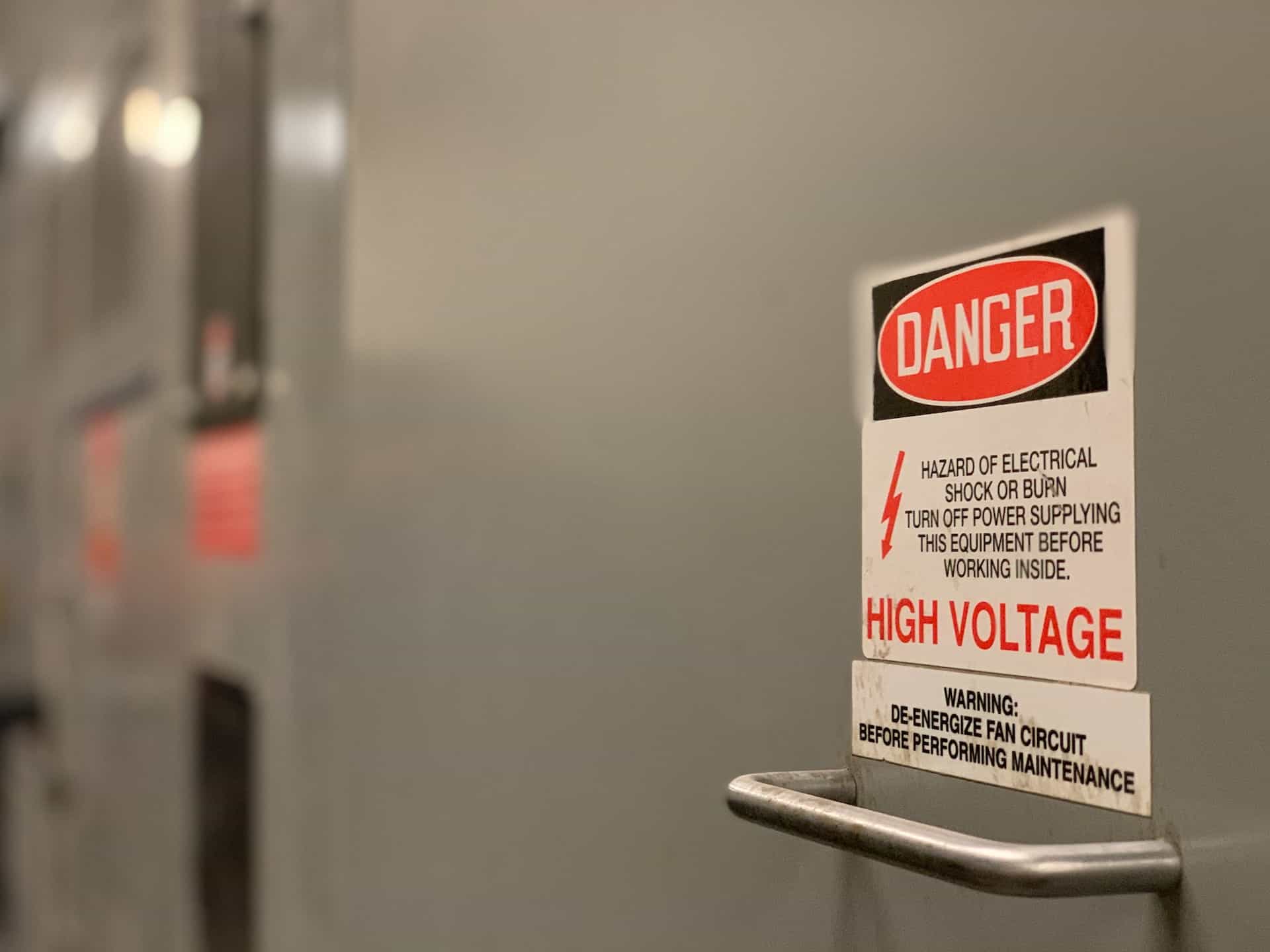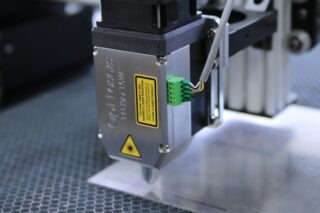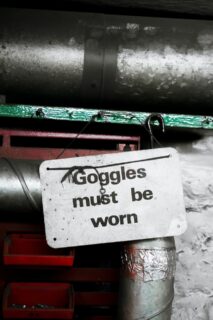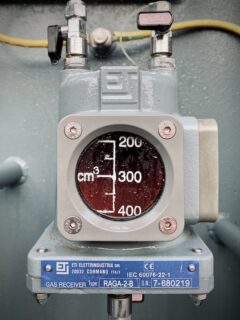Equipment identification labels are adhesive labels used to identify and track various types of equipment. They usually contain information such as the equipment’s name, model number, serial number, and other relevant details.
These labels play an essential role in asset management by enabling organizations to track equipment, manage maintenance schedules, and issue repairs quickly. They also contribute to safety measures by ensuring that equipment is correctly identified and used for its intended purpose, reducing the risk of accidents and misuse.
Benefits of Equipment Identification Labels
Efficient Asset Management: They enable organizations to easily track and manage their equipment inventory. By providing crucial information such as serial numbers and model numbers, these labels help keep a record of each piece of equipment, making it easier to locate, maintain, and service them when needed.
 Enhanced Safety Measures: They play a vital role in promoting safety within an organization. Clear and visible labels help employees easily identify and use equipment correctly, preventing accidents and reducing the risk of misuse. Additionally, labels can include safety instructions or warnings, further ensuring that equipment is handled properly in accordance with regulations and guidelines.
Enhanced Safety Measures: They play a vital role in promoting safety within an organization. Clear and visible labels help employees easily identify and use equipment correctly, preventing accidents and reducing the risk of misuse. Additionally, labels can include safety instructions or warnings, further ensuring that equipment is handled properly in accordance with regulations and guidelines.
Time and Cost Savings: By having equipment properly labeled, organizations can save time and reduce costs associated with asset tracking and maintenance. With clear identification labels, employees can quickly locate specific equipment, minimizing downtime and improving efficiency. Additionally, maintenance schedules can be easily managed, ensuring timely inspections and repairs, thereby reducing the risk of costly breakdowns.
Regulatory and Compliance Requirements: Many industries have specific regulations and compliance standards for equipment identification. Utilizing equipment identification labels helps organizations meet these requirements, ensuring that equipment is properly labeled and identified in accordance with industry guidelines and legal obligations.
Inventory Control and Loss Prevention: They provide an effective means of inventory control. By labeling equipment with unique identifiers, organizations can easily monitor equipment movement, track usage, and identify any missing or stolen items. This helps prevent loss, unauthorized use, or misplacement of equipment, saving resources and preventing unnecessary expenses.
Improved Communication and Documentation: They act as visual aids, assisting in clear communication and documentation procedures. Labels can include important information, such as equipment specifications, service dates, and other relevant details. This helps streamline communication across teams and departments, ensuring that everyone has access to accurate and up-to-date information about the equipment.
What are Equipment Identification Labels Made of?
Equipment identification labels are made of various materials, known as substrates, that provide durability, flexibility, and visibility. Here are some common substrate options used along with their thicknesses and back-adhesive properties:
Vinyl: Vinyl is a popular substrate choice for equipment identification labels. It is durable, resistant to water, chemicals, and UV exposure, making it suitable for both indoor and outdoor use. Vinyl labels typically have a thickness ranging from 2 to 4 mil (thousandths of an inch). They come with a strong back-adhesive that ensures the label securely adheres to equipment surfaces.
 Polyester: Polyester is another commonly used substrate for equipment identification labels. It offers excellent durability, resistance to tearing, and longevity. Polyester labels generally have a thickness ranging from 2 to 5 mil. They typically come with a strong permanent back-adhesive that provides excellent adhesion to various surfaces.
Polyester: Polyester is another commonly used substrate for equipment identification labels. It offers excellent durability, resistance to tearing, and longevity. Polyester labels generally have a thickness ranging from 2 to 5 mil. They typically come with a strong permanent back-adhesive that provides excellent adhesion to various surfaces.
Aluminum: Aluminum labels are highly durable and resistant to harsh environments, making them ideal for equipment identification in rugged conditions. These labels are typically made of a thin layer of aluminum with a thickness of about 0.003 to 0.005 inches. They are commonly used in industries such as manufacturing, construction, and transportation. Aluminum labels are often backed with pressure-sensitive adhesive or come with pre-drilled holes for easy installation on equipment.
Polycarbonate: Polycarbonate labels offer excellent durability, resistance to impact, and temperature extremes. They are commonly used in industrial and laboratory environments where equipment may come into contact with harsh chemicals or require frequent cleaning. Polycarbonate labels typically have a thickness ranging from 10 to 15 mil. They come with a strong adhesive backing that ensures long-term adhesion.
Paper: While not as durable as other substrate options, paper labels are cost-effective and commonly used when equipment identification labels are only required for temporary or indoor use. Paper labels typically have a thickness of 2 to 6 mil. They are backed with a pressure-sensitive adhesive that provides good adhesion to smooth surfaces.
It’s worth noting that the specific thickness of a substrate may vary depending on the manufacturer and the application requirements. Additionally, equipment identification labels can be customized with different finishes, such as matte or glossy, to enhance their appearance and visibility.
Types of Equipment Identification Labels
These labels come in various types to meet different identification needs and application requirements. Here are some of the common types of equipment identification labels:
Asset tags: These are used to identify and track individual pieces of equipment or assets. They typically have a unique barcode or serial number, equipment details, and other information that can be scanned using barcode scanners or RFID readers for easy inventory management.
 Safety labels: These are used to help prevent workplace accidents by providing clear instructions, warnings, and reminders about equipment usage. These labels can be customized with specific safety instructions, such as “wear safety goggles,” “hot surface,” or “high voltage.”
Safety labels: These are used to help prevent workplace accidents by providing clear instructions, warnings, and reminders about equipment usage. These labels can be customized with specific safety instructions, such as “wear safety goggles,” “hot surface,” or “high voltage.”
Calibration labels: These are used to mark equipment that needs to be routinely calibrated for accurate measurement and performance. These labels usually include the date of the next calibration, the person responsible for calibration, and other relevant details.
Inspection labels: These are used to mark equipment that needs to be regularly inspected or serviced for safety and performance reasons. These labels usually include the dates of previous and next inspections, the inspector’s name or ID, and other relevant details.
Serialized labels: These are used for unique identification of equipment or assets. They feature a unique sequence of numbers or characters that helps differentiate one piece of equipment from another, making it easier to track and manage inventory.
Tamper-evident labels: These are used to indicate if any equipment has been tampered with, modified, or opened. These labels feature a special adhesive that leaves a residue or pattern when removed.
Laminated labels: These are used to protect labels from wear and tear or exposure to harsh environments. These labels usually have a clear top layer that provides added protection and durability.
These are just a few types of equipment identification labels available in the market. Different types can be combined to meet specific identification and tracking requirements. Customized labels can also be made to match unique application requirements.
Common Uses for Equipment Identification Labels
These labels have numerous uses across various industries and sectors. Here are some of their common applications:
Inventory management: They are widely used for efficient inventory management. By labeling equipment with unique identifiers such as barcodes or serial numbers, organizations can easily track and manage their assets, monitor their movement, and conduct regular audits.
Asset tracking: They play a crucial role in asset tracking systems. By affixing labels with scannable codes or RFID tags, companies can quickly locate and monitor their assets, reduce loss or theft, and optimize asset utilization.
Maintenance and servicing: They are used to provide important information about equipment maintenance and servicing requirements. By including details such as maintenance schedules, service dates, or contact information, organizations can ensure that equipment is properly maintained, reducing downtime and ensuring optimal performance.
 Safety and compliance: They are employed to communicate safety instructions, warnings, and regulatory information. Labels can include safety symbols, hazard warnings, electrical ratings, or instructions for proper use, ensuring compliance with industry standards and promoting a safe working environment.
Safety and compliance: They are employed to communicate safety instructions, warnings, and regulatory information. Labels can include safety symbols, hazard warnings, electrical ratings, or instructions for proper use, ensuring compliance with industry standards and promoting a safe working environment.
Calibration and testing: They are used to indicate calibration status and dates for equipment that requires regular calibration or testing. By prominently displaying calibration details, organizations can ensure precise measurement and accuracy, complying with quality standards and industry regulations.
Equipment labeling for easy identification: They are used to provide clear identification of equipment and assets, making it easier for employees and stakeholders to locate, identify, and use the right equipment for specific tasks or needs. This saves time and reduces errors or confusion.
Warranty and asset ownership: They may include information about warranty status, asset ownership, or contact details for warranty claims or inquiries. This helps organizations keep track of equipment warranties, manage repairs or replacements, and quickly resolve any issues.
Quality control and traceability: They can include quality control information, such as manufacturing dates, lot numbers, or quality certifications. This enables organizations to trace equipment back to its origin, track its manufacturing or service history, and ensure adherence to quality standards.
These are just a few examples of the common uses for equipment identification labels. The versatility and customization options of labels make them essential tools for managing, tracking, and ensuring the proper use of equipment in various industries.
What is the Best Way to Label an Equipment?
Here are some key considerations for labeling equipment effectively:
- Choose a durable label material: Select a label material that is suitable for the equipment’s environment. Materials like vinyl or polyester are often preferred for their durability, resistance to chemicals, and UV exposure. These materials ensure that the labels remain readable and intact even under harsh conditions.
- Use clear and concise information: Keep the label design simple and easy to understand. Include essential information such as equipment name, serial number, model, or any other necessary identifiers. Additionally, consider including contact information or safety instructions if applicable.
- Ensure proper placement: Place the label in a prominent and easily visible location on the equipment. Avoid areas that may be excessively exposed to heat, moisture, or abrasion. Aim for a location that allows anyone handling the equipment to quickly identify and read the label.
- Consider barcode or QR code options: For efficient tracking and management, consider using barcodes or QR codes on the labels. This allows for quick scanning and retrieval of equipment information, facilitating seamless data entry and inventory control.
- Follow proper labeling standards and regulations: Consider any industry-specific labeling guidelines or regulations that may apply to the equipment. Ensure compliance with relevant standards to maintain safety, quality, and legal requirements.
- Use a secure adhesive: Choose a label adhesive that will securely adhere to the equipment surface without causing damage upon removal. This ensures the label remains intact over time and avoids the risk of accidental removal or tampering.
- Regularly inspect and maintain labels: Regularly check the condition of equipment labels to ensure they remain legible and securely attached. Replace or repair labels as necessary to maintain accurate identification and prevent any potential hazards associated with damaged or missing labels.
What Information is Included in Equipment Identification labels?
Here are some common pieces of information that can be included in equipment identification labels:

- Equipment name or description: The label may have the name or brief description of the equipment to quickly identify its purpose or function.
- Serial number or unique identifier: A unique identifier, such as a serial number or barcode, is often included on the label. This helps differentiate one piece of equipment from another, facilitating accurate tracking and inventory management.
- Manufacturer or brand: Labels may include the name or logo of the equipment manufacturer or brand to provide information about its origin and quality.
- Model or type: The label may list the specific model or type of equipment to narrow down its specifications or characteristics.
- Equipment specifications: Labels can include important specifications relevant to the equipment, such as size, capacity, power requirements, voltage, or any other technical details.
- Safety instructions or warnings: If applicable, the label may include safety instructions or warnings specific to the equipment. This could feature symbols, text, or pictograms to highlight potential hazards or proper usage guidelines.
- Maintenance or calibration details: Labels may indicate essential maintenance schedules, calibration dates, or recommended service intervals to ensure the equipment’s reliability and compliance with standards.
- Contact information: In some cases, the label may include contact information for equipment-related inquiries, warranty claims, or support services.
The specific information included on equipment identification labels may vary depending on the industry, regulatory requirements, or the organization’s specific needs. Customized labels can be created to accommodate unique information or formatting requirements to match the equipment and its usage.
Conclusion
Equipment identification labels play a vital role in various industries and sectors, providing a clear and efficient way to track, manage, and identify equipment. Whether it’s for inventory management, asset tracking, safety compliance, or maintenance purposes, these labels enable organizations to streamline processes, reduce errors, and enhance overall operational efficiency. With proper labeling, organizations can optimize asset utilization, achieve regulatory compliance, and effectively maintain their equipment inventory.
Popular Posts:




